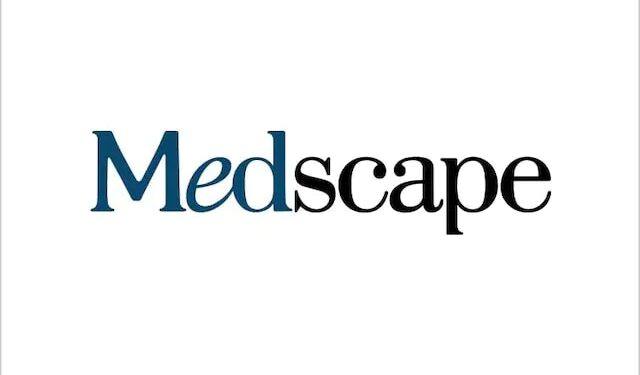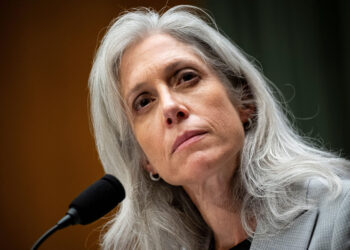Up until very recently, when Jeremy Lipman, MD, met with patients, he had an invisible tether to his computer due to the need to document each visit. But in the past few months, he has experienced a new sense of professional freedom.
Now an artificial intelligence (AI) scribe platform documents the conversation during each visit, allowing him to focus more fully on the patient in front of him. “I’m not at the computer when I’m with the patient anymore,” Lipman told Medscape Medical News. “The phone sits on the desk. I am away from the desk, sitting right in front of the patient…just having a conversation.”
“The software is absolutely remarkable,” he said about Ambience Healthcare’s new AI documentation platform that Cleveland Clinic recently launched throughout its health system.
Lipman is a colorectal surgeon at the clinic and has been in practice since 2010.
While he’s admittedly not an expert on the differences in how early-career physicians adopt and utilize technology as compared to more experienced physicians, Lipman said older doctors seem to be embracing it, too.
“I’m often surprised when we talk about a technology that sometimes some of the older doctors will tell you, ‘I’ve been using that and I love it,’” Lipman said.
The AI scribe platform listens to the interaction between the healthcare provider and the patient and “captures the transcript of the conversation,” explained Lisa Stump, chief digital information officer at Mount Sinai Health System, New York City.
Next, the platform transforms the transcript into the doctor’s note. Physicians then need to review and sign off on the note, Lipman said.
In addition to Ambience, there are a number of other AI scribe platforms, such as Abridge, Nuance DAX and Suki, Stump said, and they are really taking off.
It’s not just AI scribe technologies that are altering the medical landscape. Other tech innovations that are changing things are: AI-driven diagnostics, mobile health apps, and wearable devices monitoring a patients’ health in real time.
Are doctors of all ages embracing these new and evolving technologies in the same way? Medscape Medical News reached out to variety of experts to get their take.
Embracing Digital Innovation
“While there is variability in awareness and depth of understanding, there is consistent enthusiasm for technology,” Cleveland Clinic’s Chief Digital Officer Rohit Chandra, PhD, said in an email. “And — what is more — senior leaders across the organization (who tend to be more experienced doctors) are proactive about driving and supporting technology initiatives where they see potential.”
From Stump’s perspective, those who grew up as “digital natives” are “I think more readily able to interact with a variety of different digital interfaces,” she said.
While it’s not always the case, older generations tend to be more skeptical and hesitant — at least initially. They also want to understand the safety and liability of the technology and make sure it won’t disrupt workflow, Stump said.
There are differences in technology acceptance, assessment, and adoption between generations, said Clark Otley, MD, a dermatologic oncologist and chief medical officer for Mayo Clinic Platform, which he describes as a “privacy protected, innovation inducing platform that brings in partners from all over the world to develop new technologies.”
“Obviously, you’re going to have a lot of variation within a specific generation, as well as between generations,” said Otley. “On average, maybe the earlier generations might be a little bit more cautious and a little less facile at accepting and adopting technology.”
Sometimes, older doctors will even retire at the beginning of a technology rollout, he said. But as a society, we can’t afford that, as it would “exacerbate the shortage of healthcare workers,” Otley said.
Therefore, healthcare organizations have a responsibility to create an environment in which all providers can succeed in adopting digital healthcare technology, according to Otley.
When introducing new technologies, medical institutions should offer multi-modal training, Otley said. There’s a science behind it, he said, and it’s true of every generation. Some people are visual learners, while others are auditory or experiential learners, so there needs to be a variety of types of training.
The institution should also recognize and support different generations in terms of learning, Otley said. For example, older generations tend to value face-to-face teaching and learning more than digital or remote learning, Otley said. So having access to “super users” — peers who delve deeply into the technology early on and learn it well — can also be helpful to them.
It’s also not enough for organizations to provide one 30-minute training session without a follow-up, he said.
Intergenerational teams are important, too, said Otley, who is 60 years old.
“The magic happens when the older generation teaches the younger generation wisdom, and the younger generation brings the older generation up now with technology, and that middle generation is in their, maybe ‘sweet spot’ of raw cognitive power and digital capabilities,” he said. “So for me, the combination is the best thing in healthcare.”
How Far We’ve Come
In the past 10 years, the growth in technology and digital health has been “dramatic,” Lipman said. When he started as an attending doctor, “we were still doing some paper charting. We were doing some paper ordering. I mean, that’s unheard of today.”
Ten years ago, “digital tools and technology and healthcare were really transactional systems,” said Stump. “People entered data, ran reported. It was all very human driven.”
“I would say the biggest impact we’re now seeing by automating a lot of that work, we’re reducing the cognitive burden, the administrative burden…[which has been the biggest physician complaint since implementing electronic medical records],” Stump said.
Today, when Lipman has a medical question, “the resources that are available from online sources — GPT, other resources like GPT that use large language models —[have] been fantastic,” he said. “This AI thing is another just tremendous leap forward.”
It’s clear that these new technologies are being utilized more and more in the healthcare landscape.
“I think it varies by organization to some degree,” Stump said about the current lay of the land in this realm, “but generally speaking, the COVID pandemic definitely accelerated the adoption of digital health technologies, right? Out of necessity and literally overnight, large health systems and small had to figure out how to provide care not in the traditional face-to-face, in person manner.”
The pandemic accelerated the adoption of telehealth, which peaked, waned, and has now plateaued, Stump said.
“With now the rapid growth of artificial intelligence and agentic AI solutions, I think we’re seeing another uptick in the development of new solutions and their adoption,” she said.
Agentic AI exists when the AI model not only looks at the historical data and draws a conclusion, but “it can then take action,” said Stump.
Additionally, there are “very well-established” remote patient monitoring programs for patients with diabetes and hypertension who use wearables at home, “and these data are being captured and monitored either by an AI solution with a human then responding to an alert or always monitored by a human,” Stump said.
The Future of AI in Medicine
“I think that helping people find really good evidence to support the decisions they have to make — and [them] being more engaged in their own health — is coming,” Lipman said.
“…Perhaps even as we’re talking and the AI is understanding what we’re talking about, that an evidence-based treatment plan becomes part of the note that gets generated right away, so that then the patient and I can look at that together and talk about what that means,” he said.
The “downstream ability to code the record automatically and accurately is really starting to make a huge impact,” Stump said. “I am very cautiously optimistic about the role of AI and the technology.”
But Stump said it’s important to have a rigorous approach up front as we “evaluate technologies before we deploy them at scale and then continually monitor them as they are in use to be sure the models don’t shift or change in a way that creates unintended consequences.”
Lipman’s advice is that physicians always need to be the final check.
“Trust, but verify,” he said. “These things provide a great pathway to getting information, but it still needs to be verified as accurate.”
Source link : https://www.medscape.com/viewarticle/generational-divide-tech-adoption-how-doctors-all-ages-are-2025a1000fip?src=rss
Author :
Publish date : 2025-06-10 10:12:00
Copyright for syndicated content belongs to the linked Source.













